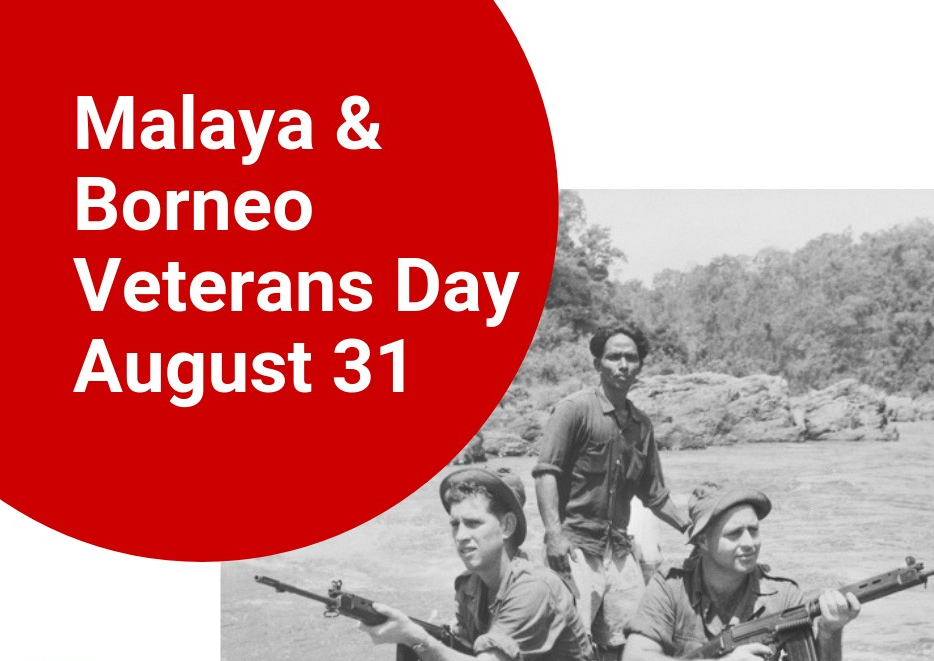
Australia’s Involvement in Malaya and Borneo: A Commemoration of Service and Sacrifice
Frontline Summery
Every year on 31 August, Australia observes Malaya and Borneo Veterans’ Day, a solemn occasion dedicated to remembering the service and sacrifice of Australian military personnel who participated in two significant conflicts in Southeast Asia: The Malayan Emergency and the Indonesian Confrontation. This date, which coincides with Merdeka Day (Freedom Day), marks the independence of the Federation of Malaya from the United Kingdom in 1957, serving as a poignant reminder of the intertwined history and shared struggles in the region.
The Malayan Emergency: Australia’s Longest Military Commitment of the 20th Century
The Malayan Emergency, a guerilla war fought between Commonwealth forces and the Malayan Communist Party (MCP), officially began on 16 June 1948. The conflict was triggered by the assassination of three estate managers in Perak by MCP guerrillas, leading the British colonial government to declare a state of emergency. However, the response to the insurgency was initially sluggish. The underlying economic, political, and social grievances of Malaya’s Chinese community, who were largely sympathetic to the MCP, remained unaddressed for years. The situation escalated significantly following the assassination of British High Commissioner Sir Henry Gurney on 6 October 1951, prompting a more robust Commonwealth military intervention.
Australia’s involvement in the Malayan Emergency commenced in 1950, when the Royal Australian Air Force (RAAF) deployed transport aircraft, bombers, and personnel to Singapore. The RAAF undertook crucial roles, including cargo runs, troop transportation, paratroop drops, and the dissemination of propaganda leaflets. The Royal Australian Navy (RAN) began its operations in Malayan waters in 1955, providing additional support to the Commonwealth forces. By 1956, Australian ground troops were engaged in anti-communist operations in Malaya, although direct encounters with guerrillas were infrequent.
The communist threat began to diminish by the end of 1959, with many MCP members retreating across the border into Thailand. The Malayan Emergency was officially declared over on 31 July 1960, yet Australian forces continued to serve in Malaya until 1963. Throughout the conflict, Australia provided not only air and infantry support but also vital artillery and engineering assistance. An airfield construction squadron notably built the main runway at Butterworth, which became a significant military asset.
The Malayan Emergency, which lasted 13 years, stands as Australia’s longest continuous military engagement of the 20th century. The Australian War Memorial’s Roll of Honour lists the names of 39 Australians who lost their lives during the Emergency, most of whom were from the Australian Army.
The Indonesian Confrontation: A Shadowed Conflict
The Indonesian Confrontation, or Konfrontasi, was a less publicized but equally significant conflict that arose from Indonesia’s attempts to destabilize and ultimately dismantle the newly formed Federation of Malaysia, established on 28 September 1963. The roots of this conflict can be traced back to the Brunei Rebellion in December 1962, when Indonesian-supported insurgents attempted to overthrow the ruling authority in Brunei. Though the rebellion was swiftly quelled, it marked the beginning of a broader Indonesian campaign, with small groups of armed volunteers infiltrating Malaysian Borneo.
By 1964, the conflict had escalated, with Indonesian regular army units becoming involved. Initially, Australia was hesitant to commit troops to Borneo, partly due to concerns that the conflict might spread to the border between Papua New Guinea and Indonesia. Nevertheless, Australia agreed to assist in defending the Malay Peninsula against external threats. Australian forces participated in operations to counter Indonesian paratroop and seaborne incursions, which, though largely unsuccessful, posed a risk of broader escalation.
In January 1965, in response to the growing threat, Australia decided to deploy soldiers to Borneo. The British military, in cooperation with Commonwealth forces, initiated cross-border operations under the codename Claret. These operations, which remained classified at the time, involved gathering intelligence and launching pre-emptive strikes to keep Indonesian forces on the defensive.
The first contingent of Australian infantry arrived in Borneo in March 1965. These troops, along with subsequent reinforcements, engaged in combat operations on both sides of the border, often in challenging jungle terrain. Australian forces suffered casualties, including from landmines, and faced the harsh realities of a covert and complex conflict. In addition to infantry, Australia deployed two Special Air Service (SAS) squadrons, several artillery batteries, and Royal Australian Engineers detachments. The RAN also played a crucial role in the surrounding waters, providing naval support to the operations.
Due to the sensitive nature of cross-border operations, the Confrontation received minimal coverage in the Australian media, and the full extent of Australia’s involvement remained largely unknown to the public at the time. The conflict concluded with the signing of a peace treaty between Indonesia and Malaysia in Bangkok in August 1966, formally ending hostilities.
The Australian War Memorial’s Roll of Honour records the names of 22 Australians who died during the Indonesian Confrontation, reflecting the sacrifice of those who served in this lesser-known but significant chapter of Australia’s military history.
A Legacy of Service
The observance of Malaya and Borneo Veterans’ Day on 31 August serves as a powerful reminder of Australia’s commitment to peace and stability in Southeast Asia. It is a day to honour the courage, resilience, and sacrifice of the Australian men and women who served in the Malayan Emergency and the Indonesian Confrontation, ensuring their legacy is remembered for generations to come.




Thanks fellas
I refer to the Merdeka Day paper. As usual, it fails to recognise the service in the Communist Insurgency in Malaysia (1968-89) which includes the operational deployment of Rifle Company Butterworth to assist with the security of Air Base Butterworth. Keep watching this space as the 2023 DHAAT Inquiry Report, already confirming what we all know – that it was NOT ‘peacetime training’ – is with the Minister and subject to further action that will see this history about service in SE Asia added to.